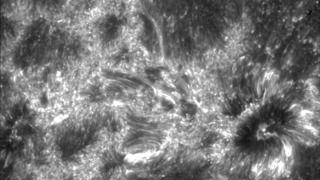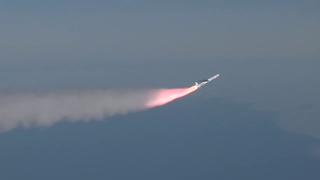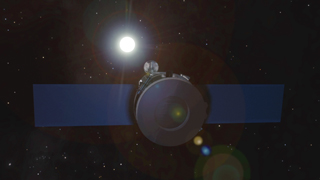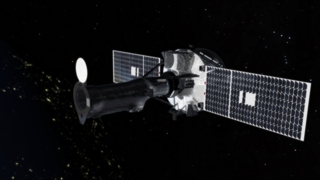IRIS L-14 Media Briefing
Understanding how the energy travels through this region – energy that helps heat the upper layer of the atmosphere, the corona, to temperatures of 1,000,000 kelvins, some thousand times hotter than the sun’s surface itself – is the goal of NASA's Interface Region Imaging Spectrograph, or IRIS, scheduled to launch on June 26, 2013 from California's Vandenberg Air Force Base.
Scientists wish to understand the interface region in exquisite detail, since energy flowing through this region has an effect on so many aspects of near-Earth space. For one thing, despite the intense amount of energy deposited into the interface region, only a fraction leaksthrough, but this fraction drives the solar wind, the constant stream of particles that flows out to fill the entire solar system. The interface region is also the source of most of the sun's ultraviolet emission, which impacts both the near-Earth space environment and Earth's climate.
IRIS's capabilities are uniquely tailored to unravel the interface region by providing both high-resolution images and a kind of data known as spectra, which can see many wavelengths at once. For its high-resolution images, IRIS will capture data on about one percent of the sun at a time. While these are relatively small snapshots, IRIS will be able to see very fine features, as small as 150 miles across.
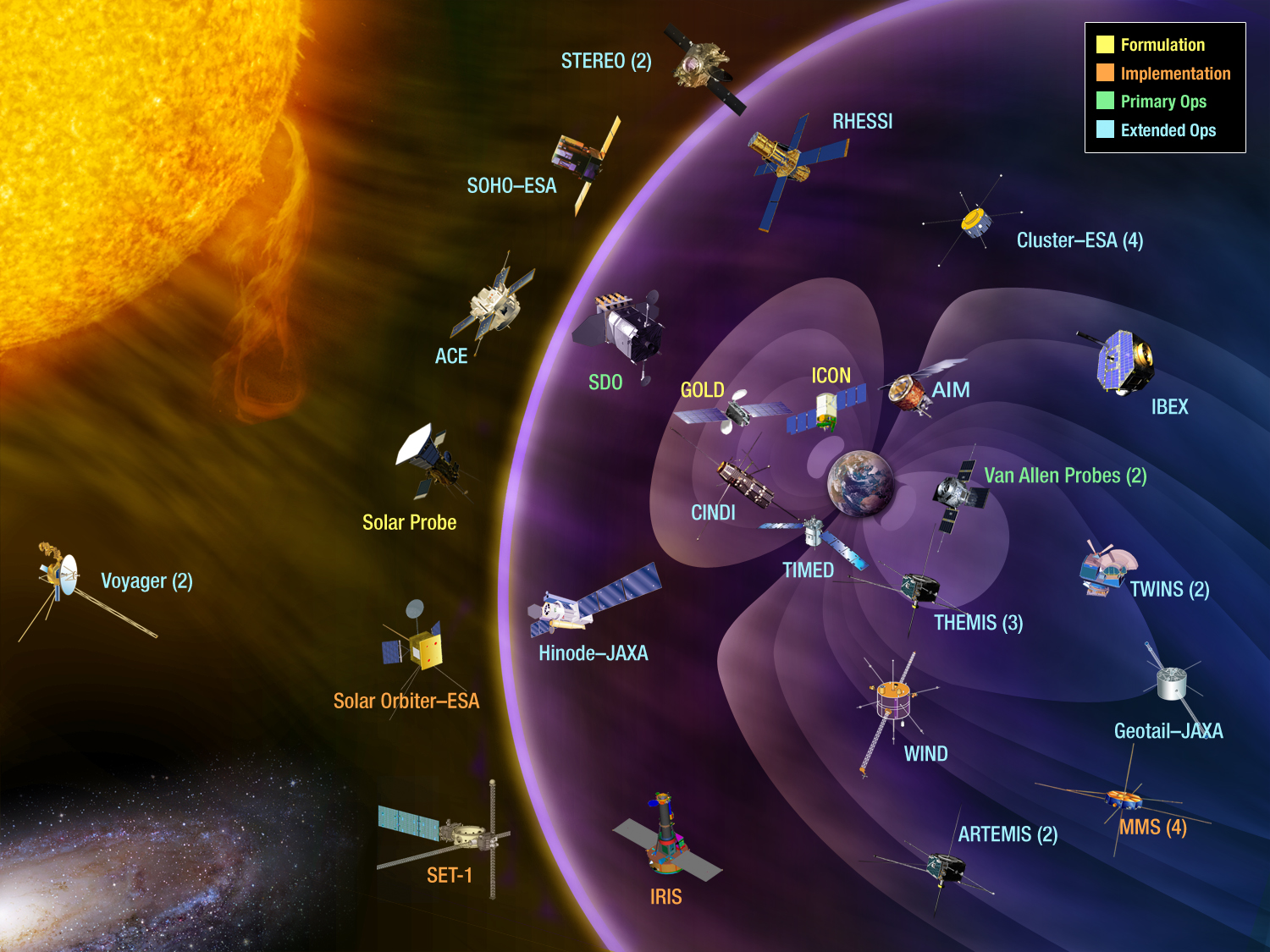
Credit: NASA
- 1024x576 jpeg (76.0 KB) Still Image
- 1280x720 quicktime (886.9 MB) 59.94 fps ProRes version for Video Editors
- 1280x720 quicktime (106.8 MB) 59.94 fps
- 1280x720 quicktime (18.6 MB) 29.97 fps
- 640x360 quicktime (16.5 MB) 29.97 fps
- 1280x720 mpeg-4 (13.2 MB) 29.97 fps
- Right click movies to download them if they automatically play in your browser.
Credit: NASA
- 1280x720 quicktime (522.0 MB) 59.94 fps ProRes version for Video Editors
- 1280x720 quicktime (138.3 MB) 59.94 fps
- 1280x720 quicktime (19.9 MB) 29.97 fps
- 1280x720 mpeg-4 (5.5 MB) 29.97 fps
- 640x360 quicktime (23.2 MB) 29.97 fps
- 1024x576 jpeg (77.0 KB) Still Image
- Right click movies to download them if they automatically play in your browser.
Credit: NASA SDO; NASA/JAXA Hinode; GSFC
- 1280x720 quicktime (606.8 MB) 59.94 fps ProRes version for Video Editors
- 1280x720 quicktime (8.0 MB) 29.97 fps
- 1280x720 quicktime (40.1 MB) 59.94 fps
- 1280x720 mpeg-4 (5.7 MB) 29.97 fps
- 640x360 quicktime (7.4 MB) 29.97 fps
- 1024x576 jpeg (31.0 KB) Still Image
- Right click movies to download them if they automatically play in your browser.
Credit: NASA SDO
- 1280x720 quicktime (288.0 MB) 59.94 fps ProRes version for Video Editors
- 1280x720 quicktime (116.4 MB) 59.94 fps
- 1280x720 quicktime (39.0 MB) 29.97 fps
- 1280x720 mpeg-4 (15.4 MB) 29.97 fps
- 640x360 quicktime (30.4 MB) 29.97 fps
- 1024x576 jpeg (133.0 KB) Still Image
- Right click movies to download them if they automatically play in your browser.
Credit: JAXA/ISAS Hinode
- 1280x720 quicktime (355.2 MB) 59.94 fps ProRes version for Video Editors
- 1280x720 quicktime (73.9 MB) 59.94 fps
- 1280x720 quicktime (13.0 MB) 29.97 fps
- 1280x720 mpeg-4 (5.4 MB) 29.97 fps
- 640x360 quicktime (19.8 MB) 29.97 fps
- 1024x576 jpeg (88.0 KB) Still Image
- Right click movies to download them if they automatically play in your browser.
Credit: JAXA/ISAS, Hinode
- 1280x720 quicktime (318.9 MB) 59.94 fps ProRes version for Video Editors
- 1280x720 quicktime (69.8 MB) 59.94 fps
- 1280x720 quicktime (21.2 MB) 29.97 fps
- 1280x720 mpeg-4 (11.5 MB) 29.97 fps
- 640x360 quicktime (13.7 MB) 29.97 fps
- 1024x576 jpeg (157.0 KB) Still Image
- Right click movies to download them if they automatically play in your browser.
Credit: Dr. Alan Title, LMSAL
- 1280x720 quicktime (262.6 MB) 59.94 fps ProRes version for Video Editors
- 1280x720 quicktime (70.8 MB) 59.94 fps
- 1280x720 quicktime (16.2 MB) 29.97 fps
- 1280x720 mpeg-4 (7.4 MB) 29.97 fps
- 640x360 quicktime (22.0 MB) 29.97 fps
- 1024x576 jpeg (76.0 KB) Still Image
- Right click movies to download them if they automatically play in your browser.
Credit: Prof. Mats Carlsson at Oslo University
- 1280x720 quicktime (151.2 MB) 59.94 fps ProRes version for Video Editors
- 1280x720 quicktime (18.1 MB) 59.94 fps
- 1280x720 quicktime (6.0 MB) 29.97 fps
- 1280x720 mpeg-4 (4.5 MB) 29.97 fps
- 640x360 quicktime (4.6 MB) 29.97 fps
- 1024x576 jpeg (118.0 KB) Still Image
- Right click movies to download them if they automatically play in your browser.
Credit: Dr. Juan Sykora at LMSAL
- 1280x720 quicktime (286.7 MB) 59.94 fps ProRes version for Video Editors
- 1280x720 quicktime (21.6 MB) 59.94 fps
- 1280x720 quicktime (3.7 MB) 29.97 fps
- 1280x720 mpeg-4 (2.7 MB) 29.97 fps
- 640x360 quicktime (5.5 MB) 29.97 fps
- 1024x576 jpeg (48.0 KB) Still Image
- Right click movies to download them if they automatically play in your browser.
Credit: Prof. Viggo Hansteen University of Oslo
- 1280x720 quicktime (379.4 MB) 59.94 fps ProRes version for Video Editors
- 1280x720 quicktime (22.0 MB) 59.94 fps
- 1280x720 quicktime (5.5 MB) 29.97 fps
- 1280x720 mpeg-4 (4.6 MB) 29.97 fps
- 640x360 quicktime (6.3 MB) 29.97 fps
- 1024x576 jpeg (92.0 KB) Still Image
- Right click movies to download them if they automatically play in your browser.
Credit: Prof. Mats Carlsson, University of Oslo
- 1280x720 quicktime (1000.0 MB) 59.94 fps ProRes version for Video Editors
- 1280x720 quicktime (83.0 MB) 59.94 fps
- 1280x720 quicktime (9.0 MB) 29.97 fps
- 1280x720 mpeg-4 (10.0 MB) 29.97 fps
- 640x360 quicktime (17.4 MB) 29.97 fps
- 1024x576 jpeg (67.0 KB) Still Image
- Right click movies to download them if they automatically play in your browser.
Credit: Dr. Bart de Pontieu at LMSAL

Credit: LMSAL, LM ATC

Credit: LM photo
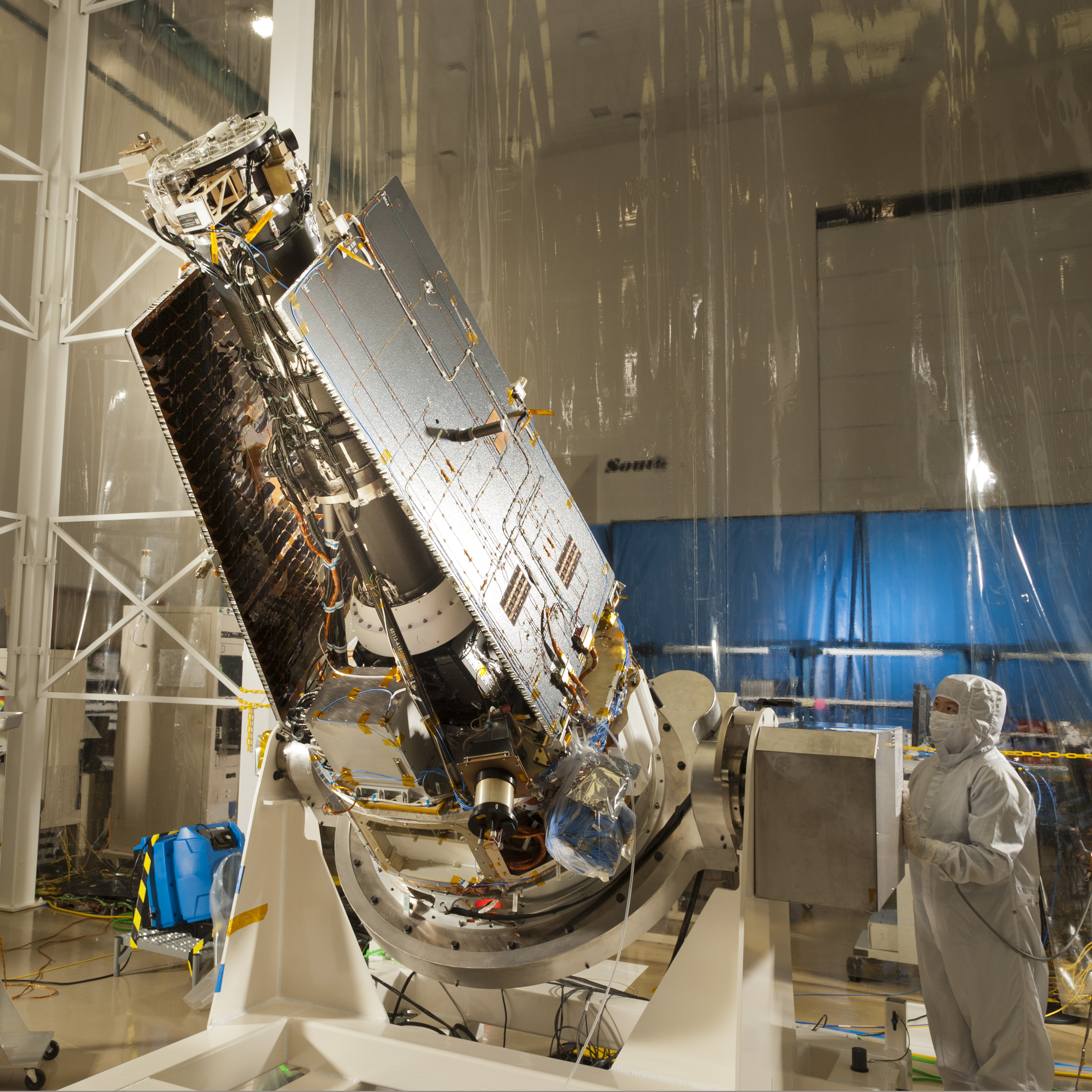
Credit: LM Photo
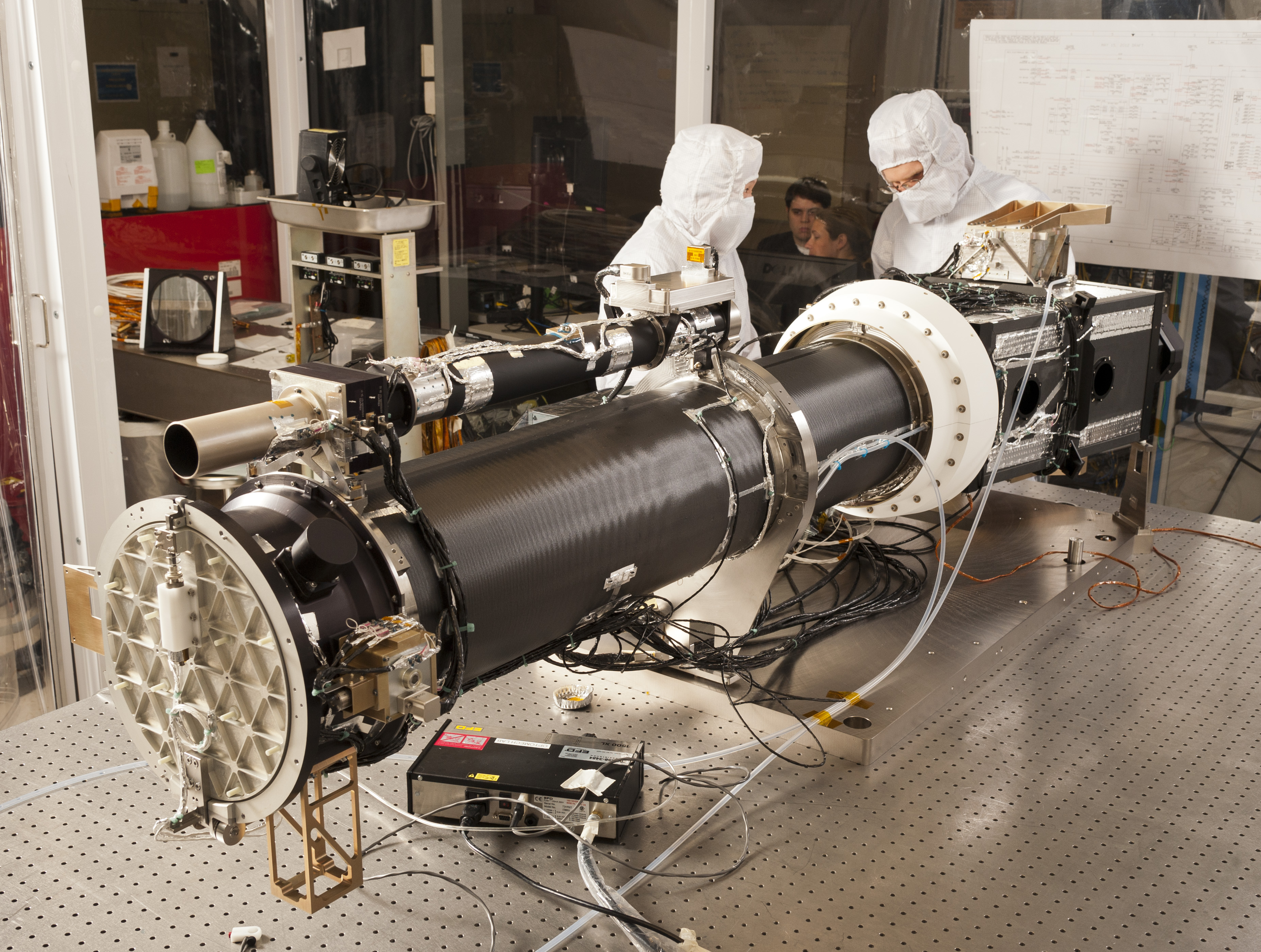
Credit: LM Photo
- 1280x720 quicktime (278.6 MB) 59.94 fps ProRes version for Video Editors
- 1280x720 quicktime (7.4 MB) 59.94 fps
- 1280x720 quicktime (1.6 MB) 29.97 fps
- 1280x720 mpeg-4 (2.3 MB) 29.97 fps
- 640x360 quicktime (1.5 MB) 29.97 fps
- 1024x576 jpeg (34.0 KB) Still Image
- Right click movies to download them if they automatically play in your browser.
Credit: LMSAL
- 1280x720 quicktime (407.8 MB) 59.94 fps ProRes version for Video Editors
- 1280x720 quicktime (111.0 MB) 59.94 fps
- 1280x720 quicktime (2.8 MB) 29.97 fps
- 1280x720 mpeg-4 (3.0 MB) 29.97 fps
- 640x360 quicktime (2.4 MB) 29.97 fps
- 1024x576 jpeg (122.0 KB) Still Image
- Right click movies to download them if they automatically play in your browser.
Credit: LM Video

Credit: PM Photo
- 1280x720 quicktime (1014.5 MB) 59.94 fps ProRes version for Video Editors
- 1280x720 quicktime (336.5 MB) 59.94 fps
- 1280x720 quicktime (54.9 MB) 29.97 fps
- 1280x720 mpeg-4 (20.6 MB) 29.97 fps
- 640x360 quicktime (68.4 MB) 29.97 fps
- 1024x576 jpeg (103.0 KB) Still Image
- Right click movies to download them if they automatically play in your browser.
Credit: LM Video
- 1280x720 quicktime (1.0 GB) 59.94 fps ProRes version for Video Editors
- 1280x720 quicktime (488.9 MB) 59.94 fps
- 1280x720 quicktime (25.7 MB) 29.97 fps
- 1280x720 mpeg-4 (15.9 MB) 29.97 fps
- 640x360 quicktime (64.0 MB) 29.97 fps
- 1024x576 jpeg (108.0 KB) Still Image
- Right click movies to download them if they automatically play in your browser.
Credit: NASA/Kennedy Space Flight Center
- 1280x720 quicktime (1.7 GB) 59.94 fps ProRes version for Video Editors
- 1280x720 60.0 fps Frames: 1280x720_16x9_60p
- 1280x720 quicktime (568.8 MB) 59.94 fps
- 1280x720 quicktime (54.8 MB) 30.0 fps
- 1280x720 quicktime (25.0 MB) 29.97 fps
- 1280x720 mpeg-4 (19.8 MB) 29.97 fps
- 1280x720 tif (2.6 MB) Still Image
- 1280x720 jpeg (106.0 KB) Still Image
- Right click movies to download them if they automatically play in your browser.
The rocket is dropped from the L1011 and is in unpowered, guided flight for 5 sec
The first stage lights and burns for 72 sec, then coasts for 17 sec. The rocket is at 71km prior to lighting of the second stage.
The second stage lights and burns for 73 sec, then coasts for 37 sec. The fairing separates at 131 sec. The rocket is at 600km prior to the firing of the third stage
Third stage burns for 69 sec placing the observatory in orbit at approximately 660km.
Once the payload is at 660km, the third stage and payload separate, at 786 seconds and the third stage carries out maneuvers to clear the observatory orbit.
The observatory then deploys the solar arrays, acquires the sun, and begins a 30 day on-orbit checkout and commissioning phase. After a 21 day outgassing and checkout period, the front door is opened and checkout of the optical systems started.
Credit: NASA/Goddard Space Flight Center/Conceptural Image Lab
- 1280x720 quicktime (107.1 MB) 59.94 fps ProRes version for Video Editors
- 1280x720 quicktime (37.5 MB) 59.94 fps
- 1280x720 quicktime (4.5 MB) 29.97 fps
- 1280x720 mpeg-4 (1.8 MB) 29.97 fps
- 640x360 quicktime (9.2 MB) 29.97 fps
- 1024x576 jpeg (76.0 KB) Still Image
- Right click movies to download them if they automatically play in your browser.
Credit: NASA/Ames Research Center
- 1280x720 quicktime (310.1 MB) 59.94 fps ProRes version for Video Editors
- 1280x720 quicktime (37.4 MB) 59.94 fps
- 1280x720 quicktime (5.0 MB) 29.97 fps
- 1280x720 mpeg-4 (4.0 MB) 29.97 fps
- 640x360 quicktime (8.6 MB) 29.97 fps
- 1024x576 jpeg (68.0 KB) Still Image
- Right click movies to download them if they automatically play in your browser.
Credit: Analytical Graphics, Inc., STK/Lockheed-Martin/IRIS
- 1280x720 quicktime (500.7 MB) 59.94 fps ProRes version for Video Editors
- 1280x720 quicktime (4.9 MB) 29.97 fps
- 1280x720 quicktime (23.1 MB) 59.94 fps
- 1280x720 mpeg-4 (5.8 MB) 29.97 fps
- 640x360 quicktime (4.4 MB) 29.97 fps
- 1024x576 jpeg (83.0 KB) Still Image
- Right click movies to download them if they automatically play in your browser.
Credit: NASA/IRIS
- 1280x720 quicktime (702.0 MB) 59.94 fps ProRes version for Video Editors
- 640x360 quicktime (7.9 MB) 29.97 fps
- 1280x720 quicktime (37.2 MB) 59.94 fps
- 1280x720 mpeg-4 (6.7 MB) 29.97 fps
- 1280x720 quicktime (8.1 MB) 29.97 fps
- 1024x576 jpeg (89.0 KB) Still Image
- Right click movies to download them if they automatically play in your browser.
Credit: NASA/IRIS
- 1280x720 quicktime (953.9 MB) 59.94 fps ProRes version for Video Editors
- 1280x720 quicktime (19.8 MB) 59.94 fps
- 1280x720 quicktime (5.2 MB) 29.97 fps
- 1280x720 mpeg-4 (9.9 MB) 29.97 fps
- 640x360 quicktime (4.3 MB) 29.97 fps
- 1024x576 jpeg (50.0 KB) Still Image
- Right click movies to download them if they automatically play in your browser.
Credit: NASA Ames Research Center/IRIS
- 1280x720 quicktime (413.0 MB) 59.94 fps ProRes version for Video Editors
- 1280x720 quicktime (5.7 MB) 59.94 fps
- 1280x720 quicktime (1.3 MB) 29.97 fps
- 1280x720 mpeg-4 (3.8 MB) 29.97 fps
- 640x360 quicktime (976.0 KB) 29.97 fps
- 1024x576 jpeg (42.0 KB) Still Image
- Right click movies to download them if they automatically play in your browser.
NASA Ames Research Center/IRIS
Cleanroom b-roll, launch, deploy, and beauty pass animations.
Related
Credits
NASA's Goddard Space Flight Center
https://svs.gsfc.nasa.gov/11286
Mission:
IRIS: Interface Region Imaging Spectrograph
Keywords:
SVS >> HDTV
GCMD >> Earth Science >> Sun-earth Interactions
GCMD >> Earth Science >> Sun-earth Interactions >> Solar Activity >> Solar Flares
GCMD >> Earth Science >> Sun-earth Interactions >> Solar Activity >> Solar Ultraviolet
GCMD >> Location >> Chromosphere
SVS >> Space Weather
SVS >> Heliophysics
NASA Science >> Sun
SVS >> IRIS Mission
GCMD >> Earth Science >> Sun-earth Interactions >> Solar Activity >> Coronal Mass Ejections
GCMD keywords can be found on the Internet with the following citation: Olsen, L.M., G. Major, K. Shein, J. Scialdone, S. Ritz, T. Stevens, M. Morahan, A. Aleman, R. Vogel, S. Leicester, H. Weir, M. Meaux, S. Grebas, C.Solomon, M. Holland, T. Northcutt, R. A. Restrepo, R. Bilodeau, 2013. NASA/Global Change Master Directory (GCMD) Earth Science Keywords. Version 8.0.0.0.0
